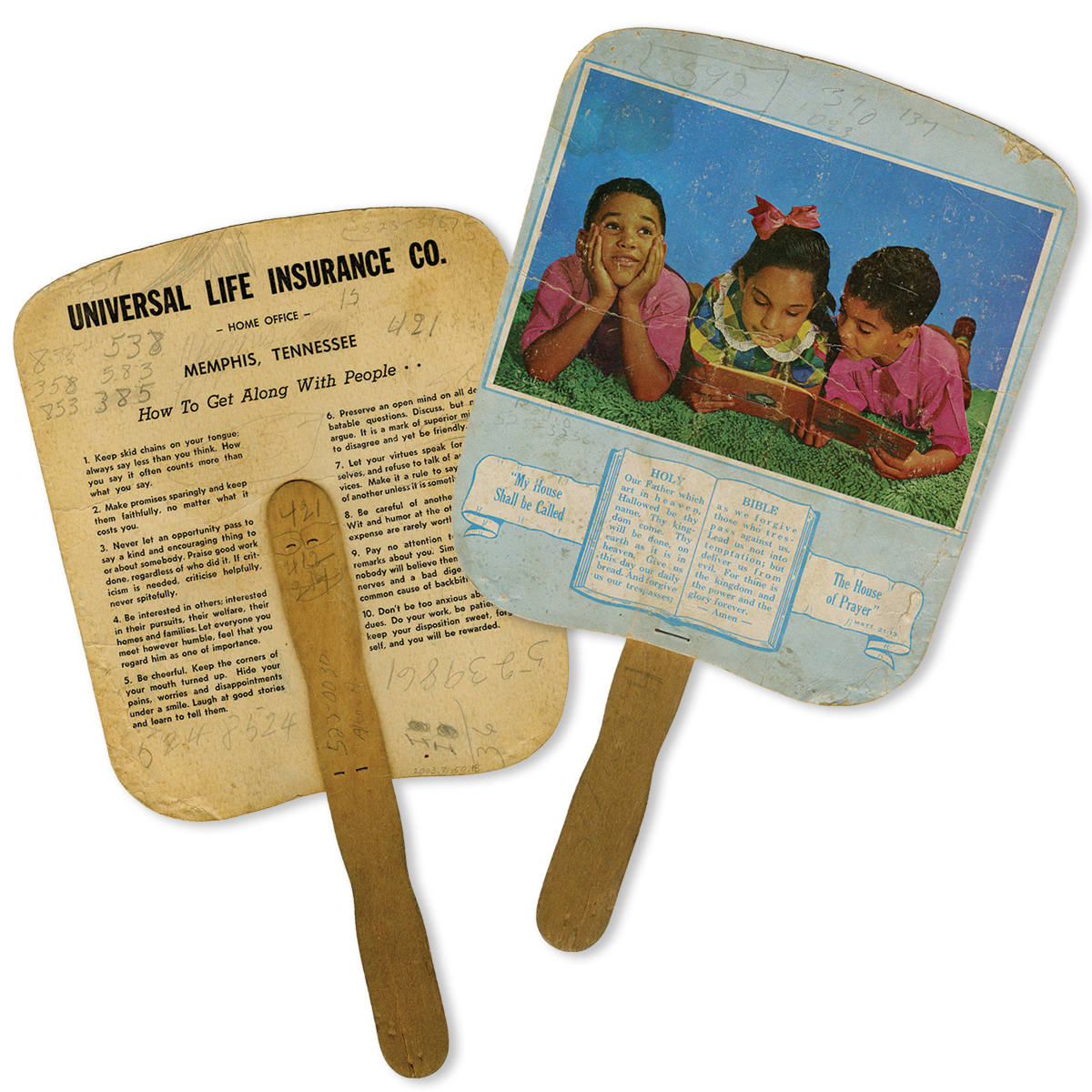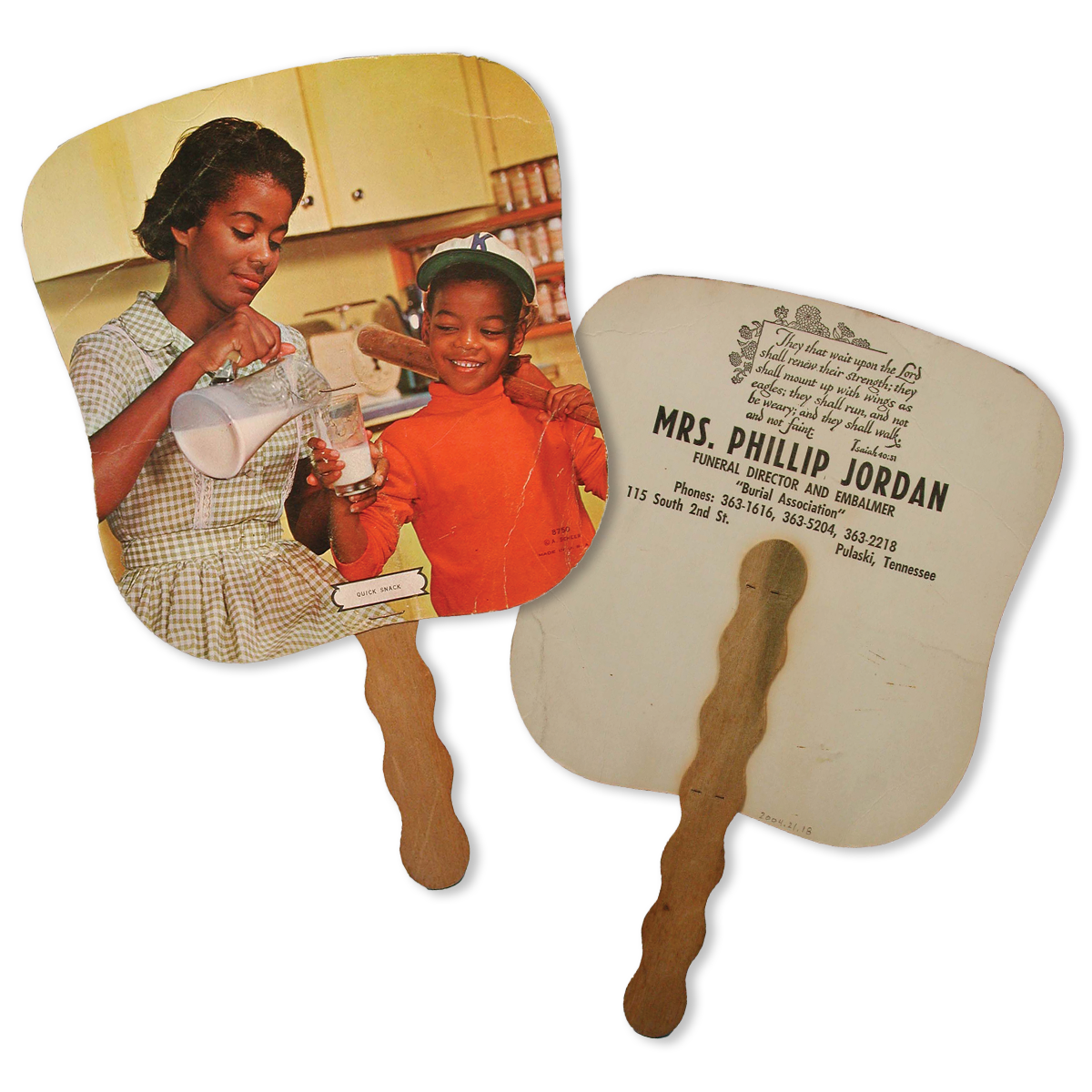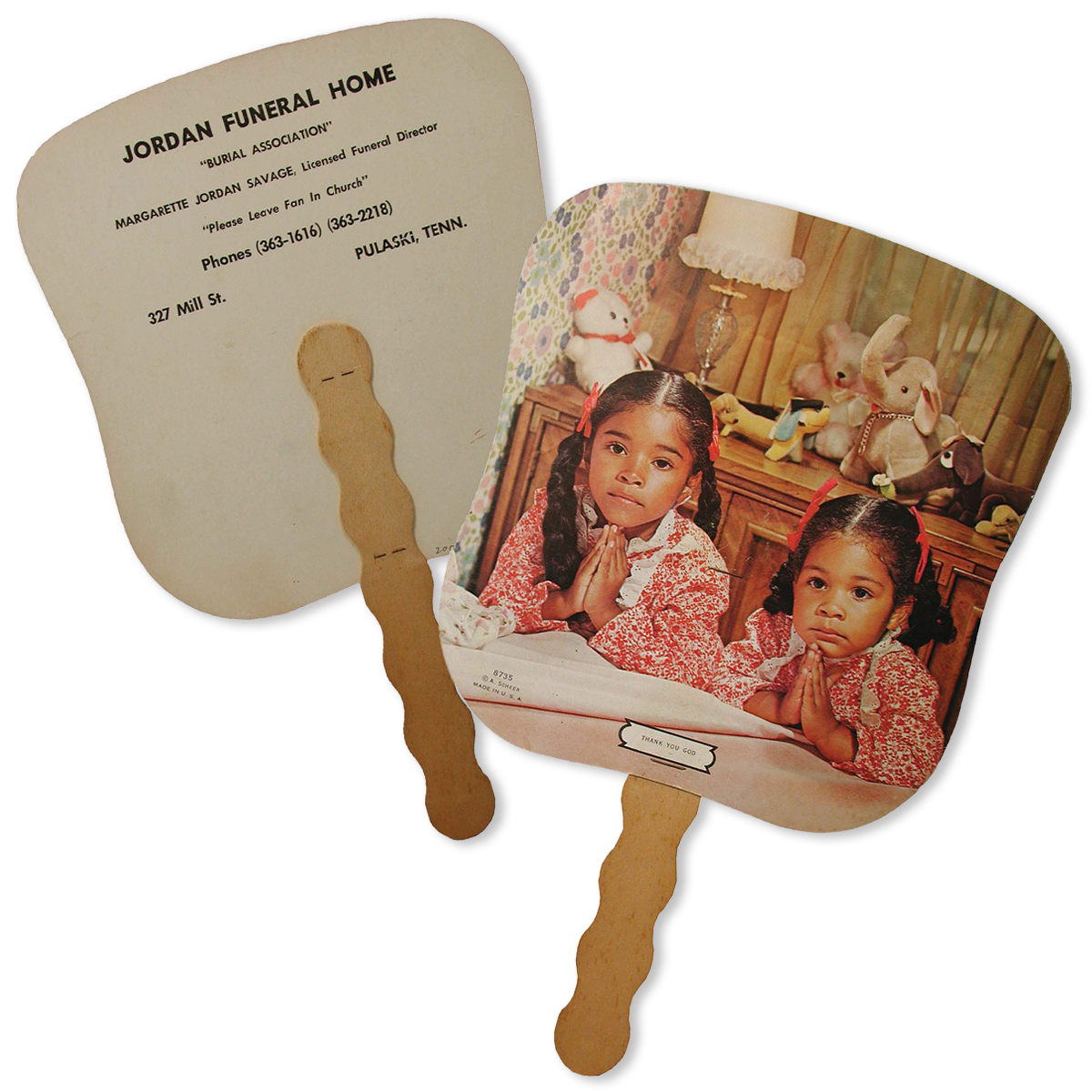Each month, Curator’s Corner welcomes a Tennessee State Museum curator to offer insight and interpretation on Museum artifacts and their connection to Tennessee history
By Tranae Chatman
Historians use material culture to better understand the lives of past peoples. For Black Americans, who historically have faced socioeconomic and political barriers, the artifacts that survive tell a story of community resistance, resilience, and resourcefulness. The study of African American material culture offers an avenue to add spiritual and cultural meaning to lives that were otherwise undocumented. Church fans are one example of artifacts that provide both spiritual and cultural context to the past lives of African Americans.
The 20th century church fan is a nostalgic representation of the African American church and a popular cultural symbol. They hold memories of fiery sermons delivered to crowded church pews, and mothers whose white hats provided welcome relief on a hot summer day. These fans often included images of African American families, past and contemporary cultural icons, and religious figures. The back of fans also displayed information from local Black businesses.

Universal Life Insurance Co. Fan, Tennessee State Museum, 2003.71.50.18
On the back of this fan is an advertisement for Universal Life Insurance Company. Universal Life was founded by Dr. Joseph E. Walker in 1923. Walker and his son A. Maceo Walker would also found the historic Tri-State Bank of Memphis. Additionally, the fan features 10 tips on “How To Get Along With People,” taken from a 1977 “Ask Ann Landers” column penned by the Esther “Eppie” Lederer, originally titled “”Ten Commandments of How to Get Along with People.” Fans like the one pictured above serve as an example of how businesses like Universal Life became important representations of the societal and religious values of their respective communities and how the fans themselves served as a community resource.
In recent years, scholars have taken an interest in these fans as representations of African American material culture. Stacey Graham, research professor for Middle Tennessee State University’s Center for Historic Preservation, has developed an online exhibit titled The African American Material Culture of Death in Middle Tennessee, set to open in Fall of 2023. In partnership with Robert Spinelli at Cheekwood, the exhibit explores African American death culture traditions with artifacts including church fans from the Tennessee State Museum’s collection.
“My introduction to the ephemera of church fans has sort of been like that,” said Graham when sharing an ‘ah-ha!’ moment during her research that she wanted conveyed in the final exhibit. “A former student who used to work at the Tennessee State Museum simply mentioned the church fan collection to me during a casual conversation about my exhibit. When I saw the scans and how so many of the fans advertised funeral homes on the reverse, I felt like this would be the perfect type of item to include in the exhibit, in juxtaposition to other more permanent types of artifacts, such as funeral homes themselves.”

Mrs. Phillip Jordan Fan, Tennessee State Museum, 2004.21.18
The back of the fan pictured above advertises funeral services directed by Mrs. Phillip Jordan in the early 1900s. According to 1920 census records, Phillip Jordan was a Black undertaker who operated his own business. His wife, Bertha Jordan is listed in the 1940 census as a widow and an embalmer. This suggests that Bertha Jordan is listed here as “Mrs. Phillip Jordan” and that she took control of the business after Phillip Jordan’s death. As a woman-led business in the Jim Crow South, this advertisement could have been vital in maintaining the livelihood of Mrs. Jordan’s business. It also reflects the resourcefulness of the African American community in developing social, economic, and cultural traditions all their own.
Graham reiterates this sentiment when discussing her goals for the exhibit. “I wanted to create a story, told in different aspects as represented by the various items, that describes how African Americans in Middle Tennessee have developed these cultural traditions in response to the legacy of slavery, the limitations placed upon them by Jim Crow laws, and the unique cultural expressions forged by communities made tight-knit by adversity.”

Jordan Funeral Home Fan, Tennessee State Museum, 2004.21.19
Material culture serves as a channel to the lives, values, and beliefs of past peoples. As a Museum, we share and interpret thousands of objects that provide insight into various groups throughout history. These objects confirm the significance of material culture, telling the stories of how people lived, fought, loved and more. Church fans are a small, but significant glimpse of time, showing the resilience and creativity of the African American community.
Learn more about using material culture to preserve their history by viewing the Museum’s In Conversation held during our Juneteenth celebration where a panel of scholars share beginner steps and practices. Additionally, you can view some of the artifacts in the Museum’s collection in our online exhibit Preserving African American History and Material Culture.

Tranae Chatman is the Tennessee State Museum Curator of Social History



